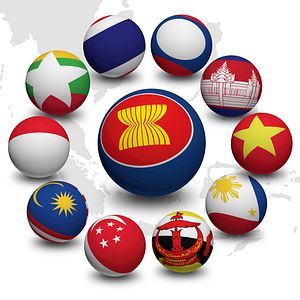Last month I conducted a workshop in Vientiane with the Lao government on the ASEAN Economic Community (AEC). This was sponsored by the Asia Foundation and Ausaid in support of Laos’ upcoming term as ASEAN Chair in 2016. Laos last served as ASEAN Chair in 2004, during which the Vientiane Action Plan for the ASEAN Communities was issued, one of the key milestones in the AEC.
Despite its previous experience as ASEAN Chair, much has changed in the AEC over the past 11 years. ASEAN has signed various new economic agreements which add to the complexity of economic integration in the region, including some among Southeast Asian states themselves like the ASEAN Single Window Agreement and free trade agreements with several countries like South Korea and India. Hopefully the Regional Comprehensive Economic Partnership talks will be completed this year as well.
The AEC aspects of being ASEAN Chair have increased significantly since 2004, as have the Political-Security and Socio-Cultural community aspects. Such responsibilities, along with the logistical burdens that would come with having two ASEAN Summits in 2016, led Laos to propose having the two summits mandated by the ASEAN Charter on a back-to-back basis in November 2016, effectively resulting in a single meeting. This is understandable, but I hope that this becomes the exception and not the norm (for example, if and when Timor Leste becomes an ASEAN member and holds the ASEAN Chair, it could also do the same). We have already had many deviations from the ASEAN Charter with regard to the notional rotation of ASEAN Chair and other formal aspects of ASEAN.
Does this mean that Laos as 2016 ASEAN Chair should be viewed with trepidation? I think not. Vientiane has previously hosted the ASEAN Summit, ASEAN Regional Forum, and the Asia-Europe Meeting (ASEM), so it can handle the logistical matters. Laos just did not feel comfortable handling two such meetings in 2016 in the form of both ASEAN Summits.
Furthermore unlike Myanmar in 2014, Laos had previous experience as ASEAN Chair and is willing to take on a more proactive stance on AEC matters (which in 2014 Myanmar largely left to the ASEAN Secretariat). For example, many Lao officials told me that they want to push for a more expansive Initiative for ASEAN Integration (IAI) program to address development gaps in the region, and with the third IAI program set to be determined in 2016, Laos can do just that. Laos has also proven to be an enthusiastic supporter of regional economic integration, as one would expect for a landlocked country. But like Myanmar, I would expect Laos to pursue a more evenhanded approach to political-security matters like the South China Sea, due to its closer relationship to Vietnam (and in contrast with what Cambodia did in 2012 as ASEAN Chair).
Regardless of the late month of the ASEAN Summit(s) in 2016, Laos will still take over its responsibilities as ASEAN Chair after the November 2015 ASEAN Summit in Malaysia. Thus, because of the additional responsibilities and tasks (particularly the IAI 3 program) I would recommend that Laos send its transition team to Malaysia as soon as possible so that the post-AEC 2015 agenda gets an early start and can continue through the 2016 Laos chairmanship.
Edmund Sim is an American international trade lawyer and partner in the trade boutique firm Appleton Luff. He also teaches at National University of Singapore law school and has served as an adviser to the ASEAN Secretariat and various ASEAN government ministries. This piece was originally published in his ASEAN Economic Community Blog here.

































